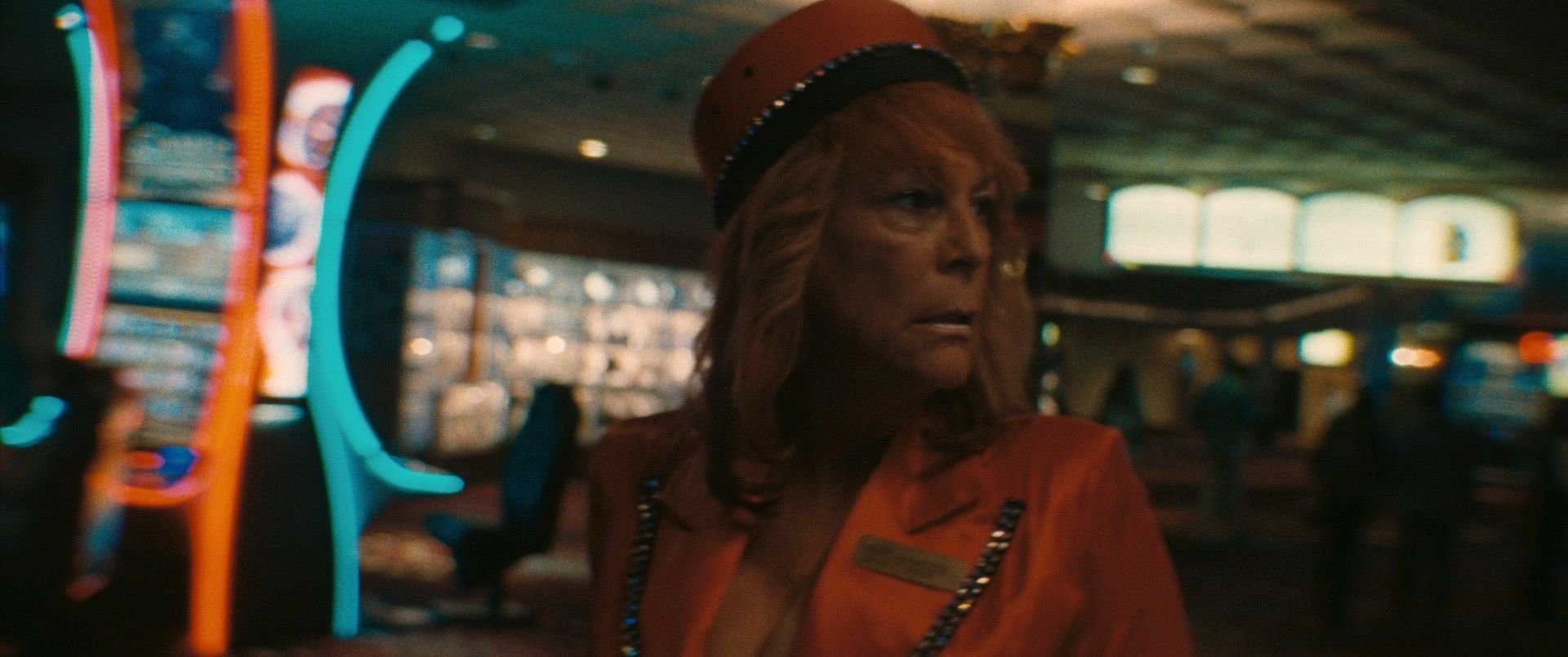The Last Showgirl
Directed by Gia Coppola
★★★★
Gia Coppola’s The Last Showgirl is an intriguing, intimate character study that captures the melancholy and resilience of reinvention. The film, centered on a seasoned showgirl grappling with the abrupt closure of her show’s 30-year run, is more than just a narrative about the end of a career. It’s a reflection on identity, purpose, and the inevitability of change. While the movie occasionally suffers from an unfocused narrative and a meandering pace, these aspects seem almost intentional, mirroring the disorientation of its central character.
At the heart of the film is Pamela Anderson, who delivers a revelatory performance that showcases depth and vulnerability audiences have rarely, if ever, seen from her. Stripped of glamour and artifice, Anderson’s portrayal is raw and honest, a testament to her range when given material worthy of her talent. Her journey from showgirl to a woman reckoning with her future is profoundly affecting. Every flicker of doubt, defiance, and self-discovery plays out across her face, pulling the viewer into her deeply personal story. It’s a career-defining turn that feels both overdue and groundbreaking.
Jamie Lee Curtis provides the perfect counterpoint as a brassy, world-weary confidante whose every scene crackles with a unique blend of wit and pathos. Curtis’s standout moment—a peculiar yet deeply affecting dance sequence—is a masterclass in storytelling through movement. The dance, equal parts awkward and poignant, encapsulates the film’s themes of vulnerability and resilience, leaving a lasting emotional imprint.
The supporting cast adds rich layers to the narrative. Kiernan Shipka is captivating as a young dancer who serves as both a foil and a mirror to Anderson’s character, embodying the hope and ambition that comes with youth. Brenda Song delivers a nuanced performance, balancing humor and gravity as a friend navigating her own uncertainties. Meanwhile, Dave Bautista continues to prove himself as a versatile actor, offering a surprisingly understated performance as a supportive yet complex presence in the protagonist’s life. His quiet strength and subtle expressions add depth to the film’s emotional landscape.
Coppola’s direction is marked by her signature blend of naturalism and artistry. She crafts a world that feels lived-in and authentic, from the glitzy remnants of the showgirl’s heyday to the quieter, more introspective spaces she now occupies. The cinematography and muted color palette underscore the protagonist’s sense of loss and transition, creating an atmosphere that is both nostalgic and hopeful.
Despite its strengths, The Last Showgirl occasionally falters under its own weight. The pacing can feel sluggish, and some narrative threads are left underdeveloped. Yet, these flaws seem to echo the protagonist’s own uncertainty, lending the film a certain authenticity that outweighs its structural shortcomings.
Ultimately, The Last Showgirl is less about spectacle and more about the beauty of honesty. It’s a deeply human story that examines what it means to redefine oneself in the face of change. Anchored by Anderson’s transformative performance and bolstered by a stellar ensemble cast, it’s a small film with a big heart, offering a poignant reminder that endings often pave the way for new beginnings.

